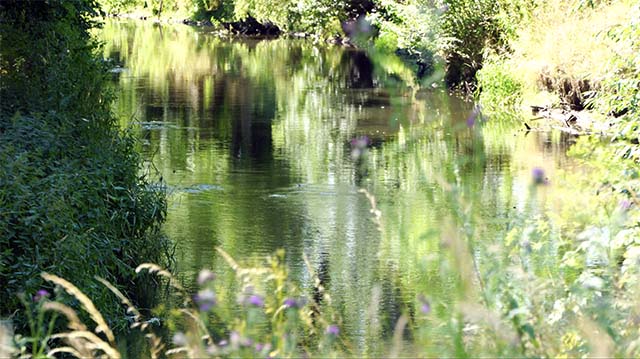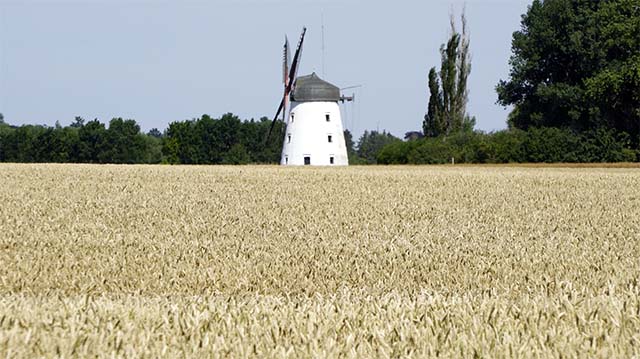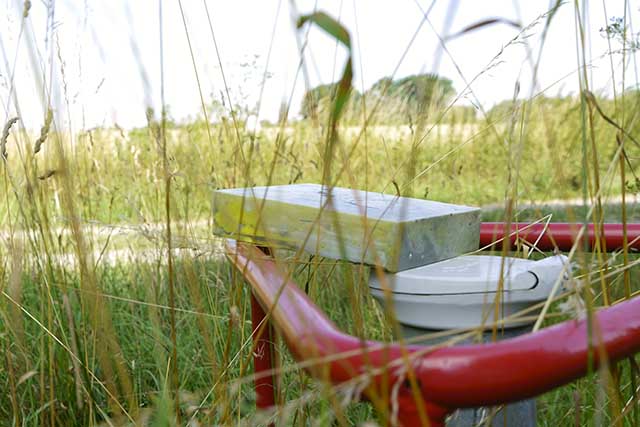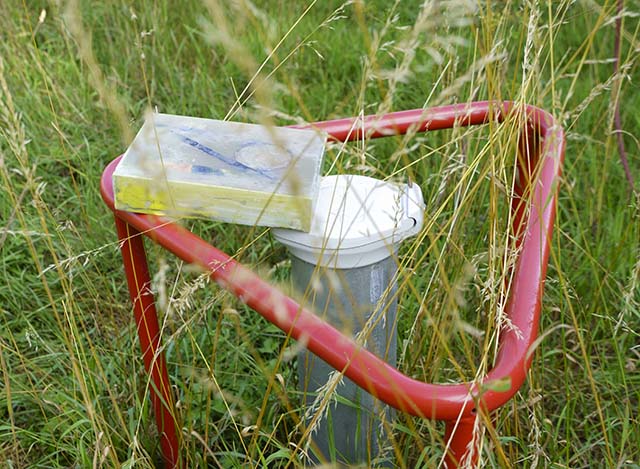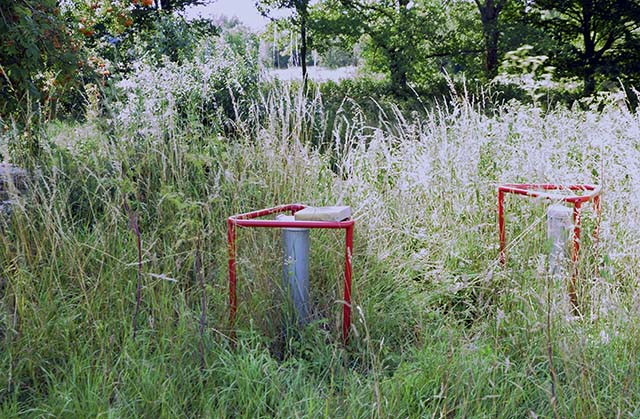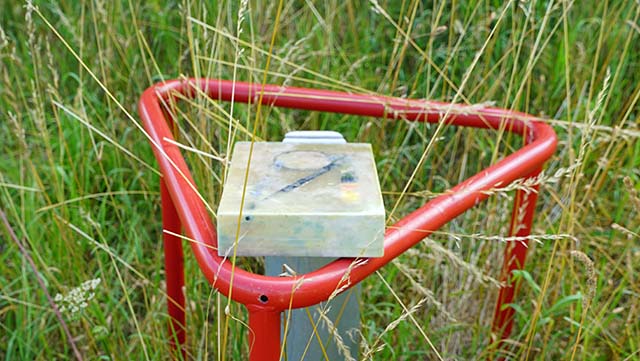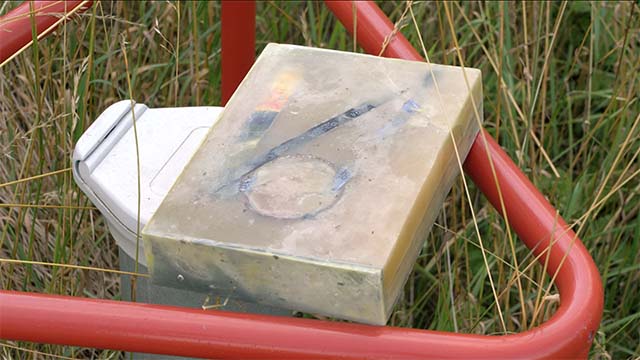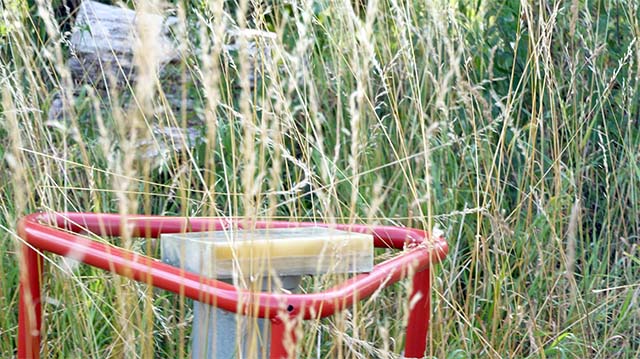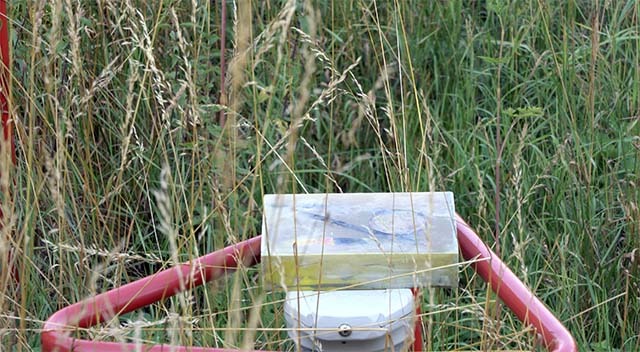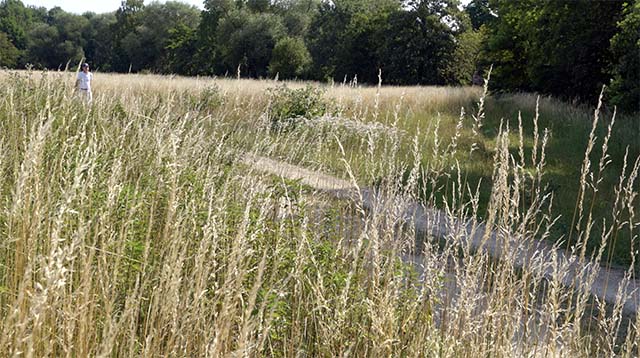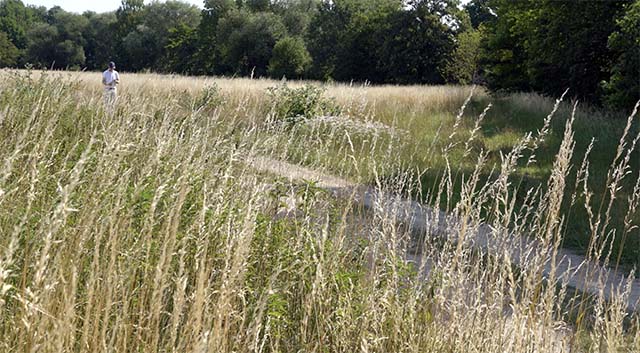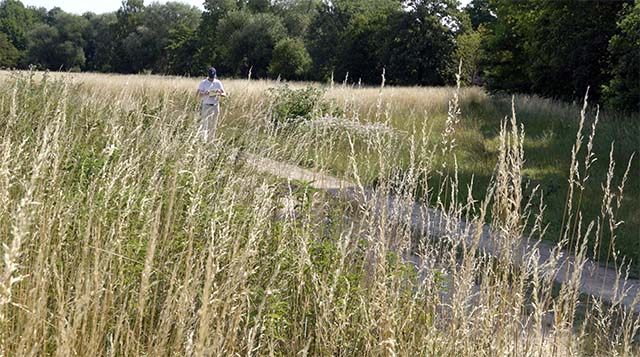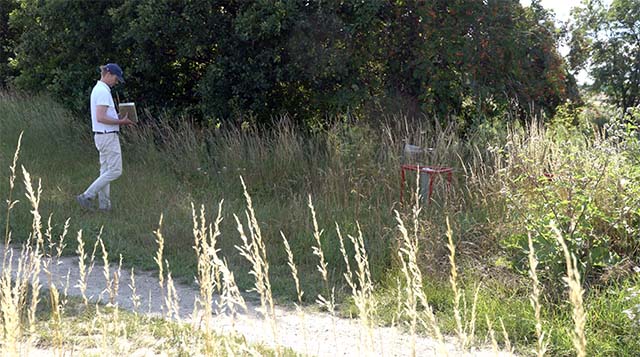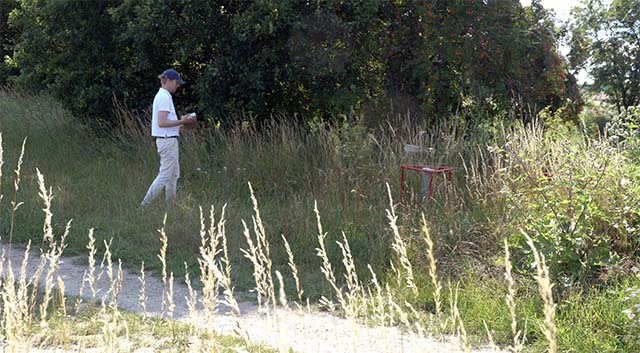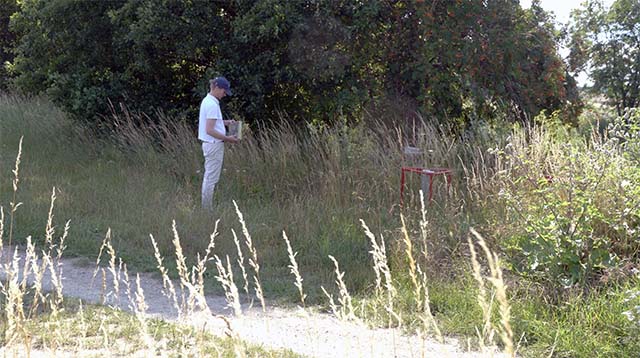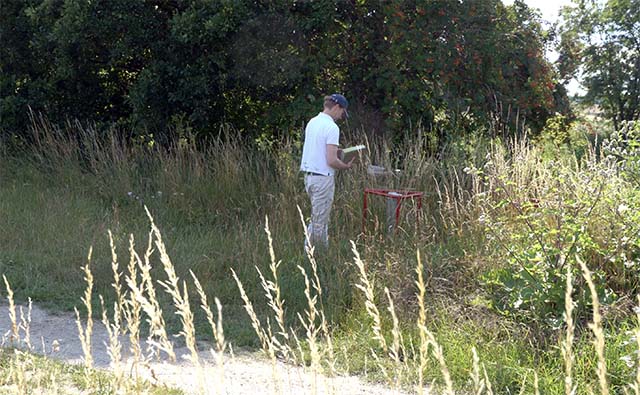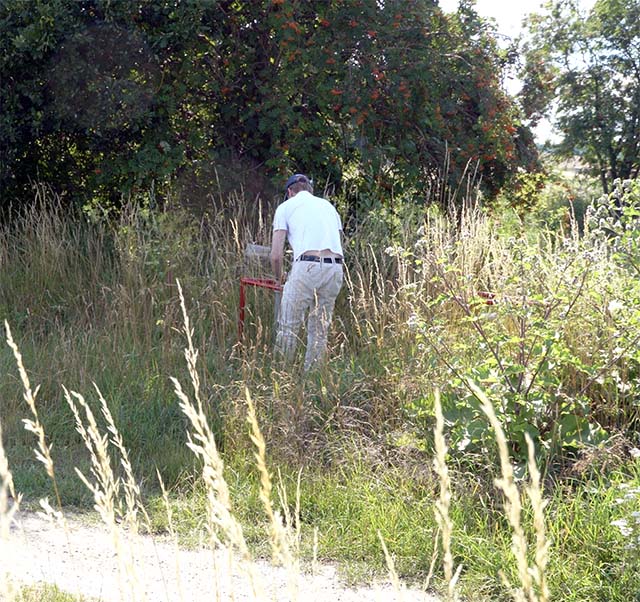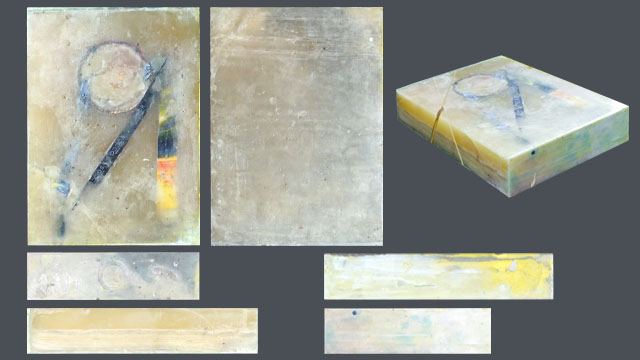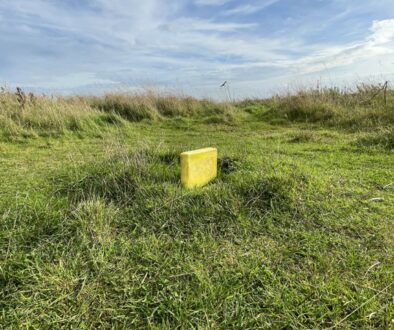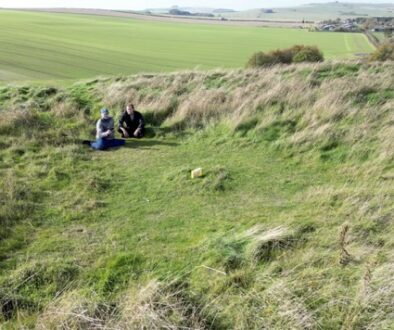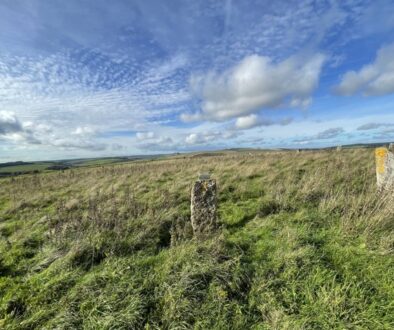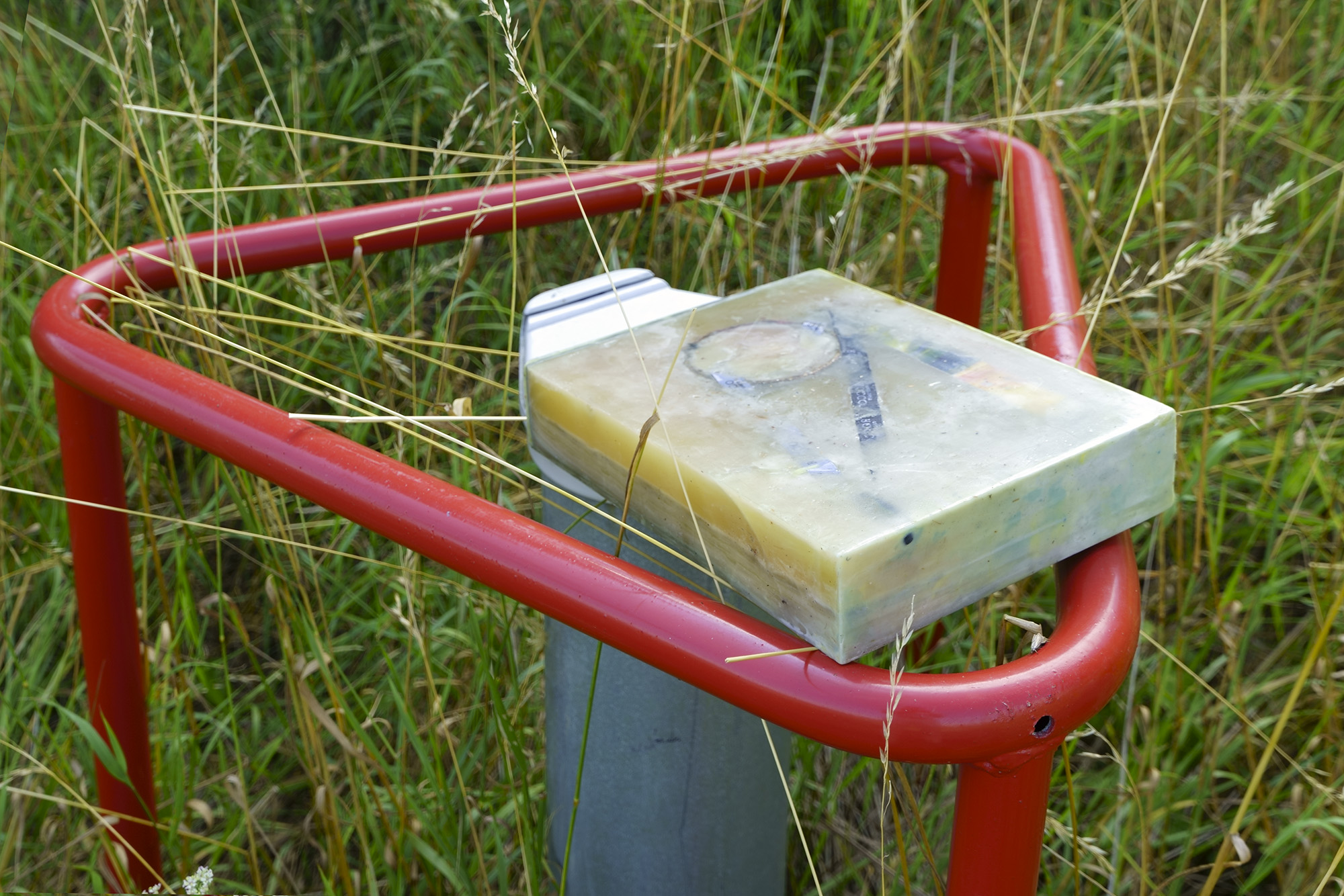
The place of “1C1A-CHARLEMAGNE” connects memories from the medieval ages with a land art project from the 21st century.
Geography
Location
Ohrum lies a few kilometres south of Wolfenbüttel on the eastern edge of the Oderwald forest, which slopes gently down to the Börßum-Braunschweig Oker valley. The valley of the Oker narrows to a few hundred metres at Ohrum and, until its regulation in the 1950s, contained an extensive gravel ford which provided a convenient crossing of the river. To the east, the terrain rises relatively steeply and reaches the Ösel and, further on, the Asse. In terms of natural landscape, this area belongs to the Okerrand Heights of the East Brunswick Hills, which is very fertile with its loess soils.
The neighbouring villages to the east are Kissenbrück, which reaches the eastern bank of the Oker with the Fährmühle in the district of Hedwigsburg, and Neindorf on the Ösel. About 5.5 km to the south is the former railway junction Börßum, and to the north, halfway to Halchter, the Bungenstedt Tower with the neighbouring windmill marks the former border between the Kingdom of Hanover, to which Ohrum belonged, and the Duchy of Brunswick, which also extended along the east bank.
The highest point of the municipality and the Oderwald is the Hungerberg with an altitude of 205 m a.s.l.
Oker
The Oker, which flows from the Harz to the Aller, used to take in the similarly water-rich Harz River Ilse shortly before Kissenbrück. Its course still exists as the Alte Ilse near Hedwigsburg. The Oker divided at Ohrum, the eastern branch being used as a millrace for the ferry mill and the western ditch as a free flood. The weir was located far above the present bridge. A bridge was not mentioned until 1381 (documented in 1535) and was probably built together with the ferry mill.
History
Numerous Neolithic tools and utensils have been found on the eastern slope of the Oderwald near the village in recent centuries, dating to the 4th-5th millennium B.C. Similar discoveries have also been made from the eastern bank of the Oker River, which have also been assigned to the Bandkeramic culture. Many finds indicate long-distance trade relations in the Neolithic period. Other finds date from the Merovingian period.
Ohrum was significant in the Middle Ages because of the Oker ford, which was part of the historical “Deitweg”, an important route for long-distance trade. It connected the region of Goslar with Schöningen and led supra-regionally from the Rhine to the Elbe. Old path fortifications were found on the Schmiedeweg, which runs towards Cramme into the Oderwald through a hollow way. Towards the east, this path crossed the Oker to Kissenbrück. From the south, a path led in from Goslar via the imperial palace of Werla, which presumably crossed the Oker in pre-Frankish times and continued north on the east bank via Salzdahlum towards Lüneburg (the later federal road 4). The road was a strategically important crossing point.
The strategically important crossing was the scene of historical decisive battles: As early as 747, the place with Schöningen was first mentioned in the Frankish annals as “Orhaim”, because Pippin the Short fought here with his brother Grifo for his inheritance. Pippin’s son Charlemagne subdued the Eastphalian Count Hessi here and carried out the traditional mass baptism. Ohrum is thus considered one of the oldest places in Lower Saxony.
Ohrum’s importance was consolidated in 1022, at a time when Bernward, Bishop of Hildesheim, was lord of the village. The construction of the monasteries in Heiningen and Dorstadt along the north-south road to Goslar also dates from this time. The strategically important Oker crossing lost its importance with the foundation of Wolfenbüttel in the 12th century.
Until the Hildesheim Collegiate Feud in the 16th century, Ohrum belonged to the Hochstift Hildesheim, then temporarily to the Duchy of Brunswick and after the Thirty Years’ War to the Hochstift Hildesheim again until 1803, then to the Kingdom of Hanover.
Origin of the name
The first mention of Ohrhaim in 747 is interpreted in the Ohrum Chronicle with reference to Blume, among others, as containing the word aur in addition to the suffix -heim. This is also assumed to be a component of the river name Ohre and is derived from the Old Norse term for “gravel” and “sandbank”. It is still present in various Scandinavian languages and is found, for example, as “-ör” in many place names on the Baltic Sea. This, along with other place names (see -büttel) and historical finds (Hünenburg near Watenstedt), would suggest a living connection or migratory movement between the region and northern Europe in the pre-Frankish period.
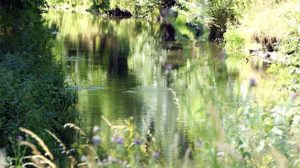
The Oker [ˈoːˌkɐ] is a 128.3 km long left tributary of the Aller in Lower Saxony (Germany). It rises in the highlands of the Harz Mountains and is one of the most water-rich regional watercourses due to its tributaries from the Brocken region.
It was first mentioned in 747 as Ovacra in connection with the Oker crossing in Ohrum, making this place, together with Schöningen, the oldest mentioned in writing in Lower Saxony. Ohrum was also the scene of a mass baptism staged by Charlemagne. Other historical sites include the imperial palace of Werla and the towns of Braunschweig and Wolfenbüttel.
South of Schladen, it also runs through Saxony-Anhalt territory in several places on short stretches. Part of its catchment area, the Ilse and the Ecker, is also located in this federal state.
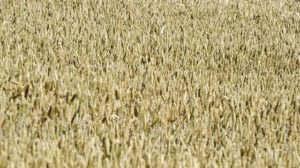
The mill shown is part of the Lower Saxony Mill Road and forms the other boundary of our placement 1C1A – CHARLEMAGNE. From time to time it is still in operation.
Somehow I was happy about this fat wheat meadow, after all it gave me this colour which I associated with the name of the river Oker: an ochre and golden yellow the ears of corn waved in the sun.
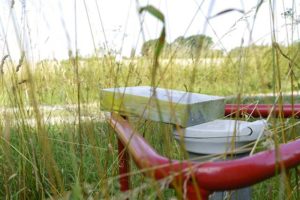
On the one hand, it is good to become aware of the history of a place, on the other hand, this technical triangle that forms the pedestal of our partial sculpture expresses very clearly the time in which we live. As much as I am convinced that the past has an enormous influence on our present conditions, I also know to what extent visions of the future are able to change the overall sculpture of our existence.
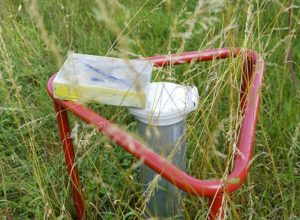
Just a reminder that the placement of a WEARTH Wax Stone is both protocol based and very much dependent on the intuition of the person placing it. So in this specific case, before placing it, I had no idea that this was the site of Charlemagne’s baptism of the Saxons or that Ohrum is one of the two oldest places in Lower Saxony. Interestingly (also an indication of metaphysical gravity), the next placement was in Schöningen, the other oldest place in Lower Saxony. Of course, I did not know this fact before either….
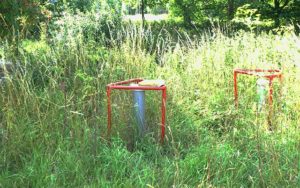
And if the past speaks to the present, a solution might emerge in the here and now for upcoming challenges and thus a better future. How can we imagine Germany overcoming its bureaucracy, France its centralism, Italy its corruption and North-South divide, Switzerland its petit-bourgeois navel-gazing and Austria find a bourgeois culture between old nobility and people working the land? How can we defend the values of the French Revolution, those of human dignity, those of the free and strong individual against systems that favour pyramidal social organisation with one human being, mostly one male, while proceeding imperialistically? Perhaps a great reunification would not be a bad idea. At least the Jewish Berlin writer Heinrich Eduard Jacob would probably agree with us; here is a quote from his book “Blut und Zelluloid” from the 1930s:
“…, a great spiritual voluptuousness was audibly poured through him! The German sang to him, the Frenchman, the eternal song of Paisello.
Nel cuor più non mi sento
Brillar la gioventù
cagion del mio tormento,
amor, sei colpa tu!
Mi pizzichi, mi stuzzichi,
mi pungichi, mi mastichi;
che cosa è questo, ahimè?
Pietà, pietà, pieta!
Amore è un certo che,
che disperar mi fa.
At that moment, the magical triangle of the countries that are the footstool of God closed in the heart of the writer Delbosq: France, Italy and Germany. The occidental glory of these three cathedrals of Charlemagne; of these palaces filled with miracles; belonging together; and separated only by the abuse of rogue administrators who – sitting with long oar poles on the diversity of language – tore, pushed and beat the peoples apart….”
„…, eine große geistige Wollust war hörend durch ihn hingegossen! Die Deutsche sang ihm, dem Franzosen, das ewige Lied Paisellos vor.
Nel cuor più non mi sento
Brillar la gioventù
cagion del mio tormento,
amor, sei colpa tu!
Mi pizzichi, mi stuzzichi,
mi pungichi, mi mastichi;
che cosa è questo, ahimè?
Pietà, pietà, pieta!
Amore è un certo che,
che disperar mi fa.
In diesem Augenblicke schloß sich im Herzen des Schriftstellers Delbosq der magische Triangel der Länder, die der Fußschemel Gottes sind: Frankreich, Italien und Deutschland. Die abendländische Herrlichkeit dieser drei Dome Karls des Großen; dieser mit Wundern erfüllten Pfalzen; zusammengehörig; und nur getrennt durch den Missbrauch schurkischer Verwalter, die -mit langen Ruderstangen auf der Verschiedenheit der Sprache sitzend – die Völker auseinanderrissen, stießen und zusammenschlugen….“
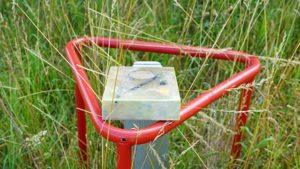
The Number 9 in Numerology: The Meaning of Nine
In numerology, the fated number is the number that reflects a person’s relationship to their environment. The fate number is used to describe how an individual’s life can go in the areas of love, friendship and profession. Since this fate number remains the same throughout one’s life, one can read from it very well what one’s destiny is and what tasks must be passed in order to reach one’s life goal. From the fate number you can not only deduce which challenges await you, but you can also recognise which people are best suited to you, which is of inestimable value, especially with regard to a partnership.
THE MEANING OF THE NUMBER 9
In numerology, the fateful number 9 stands for the omnipresence of the immortal soul, which is why 9 is always surrounded by an aura of mystery and mysticism. Whoever is born with this number will have much success in life. But this success does not come by itself, it is the result of a considerable amount of work. Thus, the fateful number or life number 9 also stands for hardship and toil, which can, however, be overcome quite successfully. It is important for people with the life number 9 to come to terms with themselves again and again and to determine for themselves what they want and where the journey should go, so that their inner balance is maintained. The fate number 9 ensures that one can recognise the meaning of life faster than other people and also act accordingly. The bearers of this number usually realise early on that life brings both joy and suffering and that one must accept both in order to move forward.
OPTIMISTS WITH LITTLE ASSERTIVENESS
People with the fate number 9 always show a lot of sympathy for the worries and problems of their fellow human beings. As a rule, they have a very pronounced humanitarian streak and help whenever and wherever they can. They are very open-minded towards their fellow human beings, but there is always something mysterious about them and they do not like to be shown their cards. Nevertheless, you can trust people with the fate number 9 and rely on them at all times. They have a very optimistic view of life and also take something positive from negative experiences. Unfortunately, they cannot always assert themselves as they should and therefore always run the risk of being taken advantage of by others. They also show a lot of emotion and love in their relationship and are always ready to sacrifice themselves for their loved one.
THE NAME NUMBER 9
Those who go through life with the name number 9 have been treated with benevolence by fate, because people with this name number are usually characterised by honesty, inner independence and an enormous spiritual and creative potential. People with a 9 as their name number are particularly concerned with their spiritual development throughout their lives, whereby they learn best and most quickly from meeting and dealing with other people whose spiritual demands and abilities serve as role models for them. They also have a natural talent for recalling experiences from previous lives and using them in the here and now to avoid many a pitfall in life.
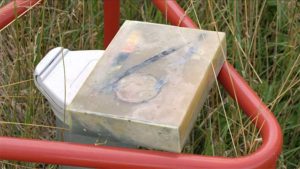
There is quite a bit of wisdom in the fact that 6 and 9 are basically the same signs, just turned 180 degrees. While the 3 refers to our three-dimensional existence on this earth, the 6 refers just as inevitably to blackness and death. The 9, on the other hand, stands for the “God perspective”, perfection. All these 3 numbers are closely related and refer to the existential experiences of our lives and remain independent of individual people.
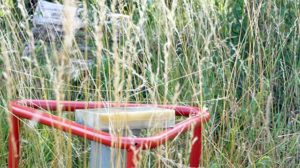
If the number 6 belongs rather to the black space, then in the spiritual space (3rd level of colour perception; see other posts) the number 9. belongs to the white space. Between the two lies the amber plane. How beautifully the amber colour of the stone coincides with the ochre colour of the wheat field.
Click on the photos to see some co-creation details
With brick 1B1A we enter the second hexagonal protocol placement in Germany. It was at Castle Borbeck’s park in Essen.
It is considered one of the oldest landscaped parks in the Rhineland. In the 18th century, the last prince abbess of Essen, Maria Kunigunde of Saxony (1776-1803), had the garden redesigned in the “English-Chinese” style.
This included decorative elements such as a pavilion, a “Wirtshäusgen” and a “Bauernhäusgen” as well as an artificial ruin. In addition to this particular form of English landscape garden, the castle park also shows characteristics of a Baroque Garden to this day: the former cascade, lined by straight paths and leading axially towards the palace.
Whatever design elements may have been ‘in vogue’ at the time: Ever since the prince abbesses began to transform the former beech forest into a woodland park in the 16th century
the park has always represented the wealth and power of the authorities as well as the cultural concepts of landscape art in England in China.

